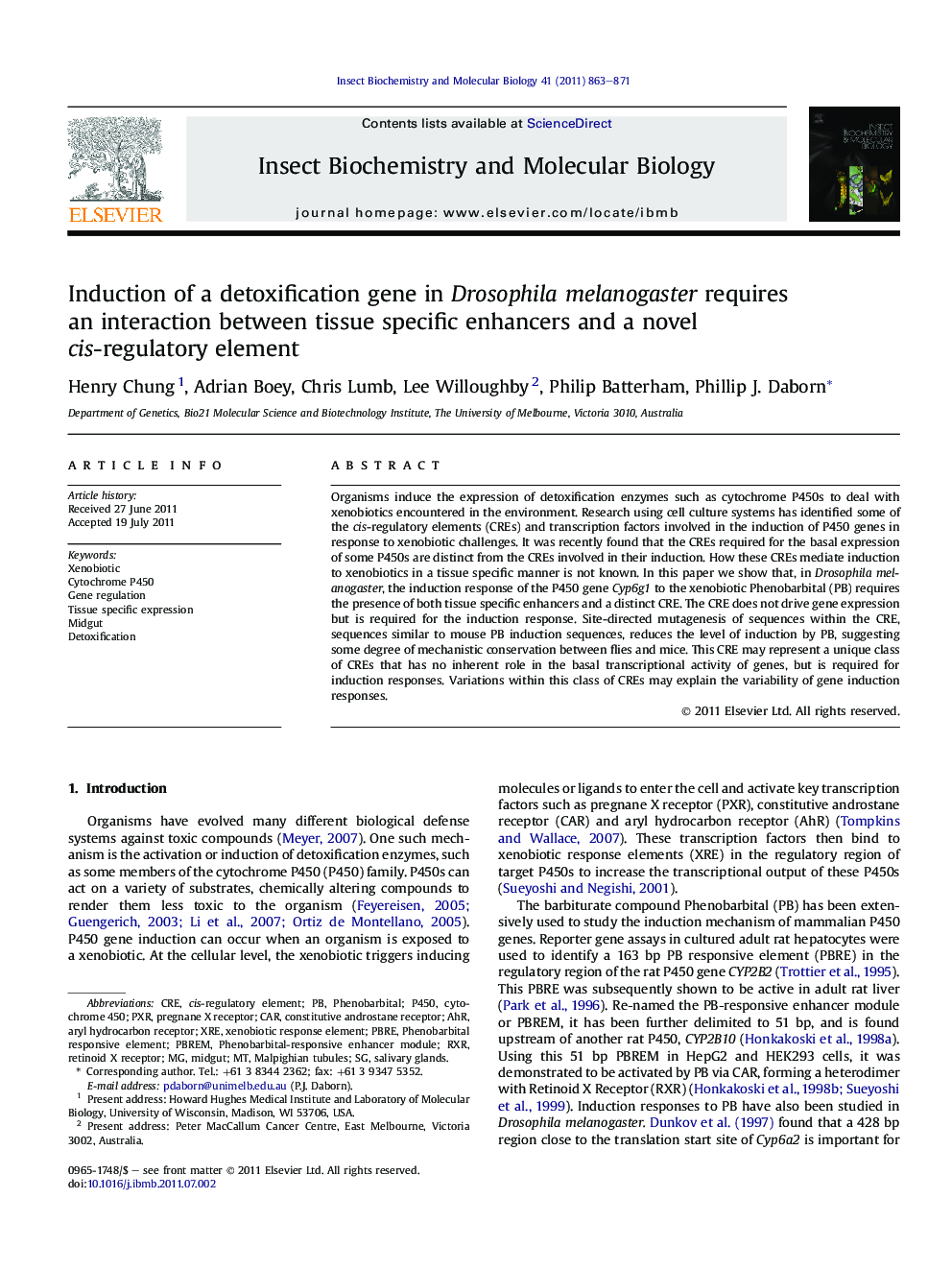| Article ID | Journal | Published Year | Pages | File Type |
|---|---|---|---|---|
| 1982301 | Insect Biochemistry and Molecular Biology | 2011 | 9 Pages |
Organisms induce the expression of detoxification enzymes such as cytochrome P450s to deal with xenobiotics encountered in the environment. Research using cell culture systems has identified some of the cis-regulatory elements (CREs) and transcription factors involved in the induction of P450 genes in response to xenobiotic challenges. It was recently found that the CREs required for the basal expression of some P450s are distinct from the CREs involved in their induction. How these CREs mediate induction to xenobiotics in a tissue specific manner is not known. In this paper we show that, in Drosophila melanogaster, the induction response of the P450 gene Cyp6g1 to the xenobiotic Phenobarbital (PB) requires the presence of both tissue specific enhancers and a distinct CRE. The CRE does not drive gene expression but is required for the induction response. Site-directed mutagenesis of sequences within the CRE, sequences similar to mouse PB induction sequences, reduces the level of induction by PB, suggesting some degree of mechanistic conservation between flies and mice. This CRE may represent a unique class of CREs that has no inherent role in the basal transcriptional activity of genes, but is required for induction responses. Variations within this class of CREs may explain the variability of gene induction responses.
Graphical abstractFigure optionsDownload full-size imageDownload high-quality image (95 K)Download as PowerPoint slideHighlights► Cyp6g1 is regulated in the midgut and Malpighian tubules by two distinct enhancers. ► GATA binding sites are important for Cyp6g1 expression in the midgut. ► The xenobiotic Phenobarbital induces Cyp6g1 in a tissue specific manner. ► Induction requires a novel cis-regulatory element and a tissue specific enhancer.
